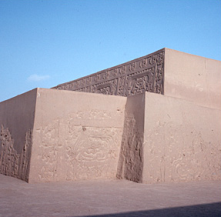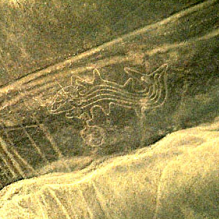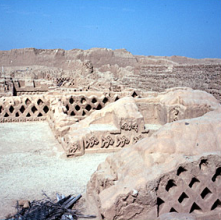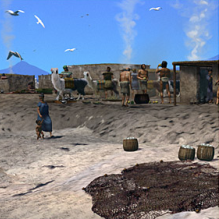explore
Coastal Desert - Politics

The coastal environment isolated the early coastal cultures into separate independent units. People settled in coastal valleys, and used irrigation so they could cultivate the land. Settlements were concentrated around oases, where irrigation supported large agrarian populations. By 2500 B.C., the communal labour of village settlements had begun to build many large ceremonial buildings. As the centuries passed, monumental building projects became more and more elaborate.
Image: Huaca el Dragón, a large ceremonial structure on the north coast built in ancient times and recently restored in modern times.

Because coastal cultures were isolated, coastal art styles showed variety and uniqueness from one valley to the next. the Moche dominated the north coast between A.D. 1 and 800. These sea-oriented people are associated with a great art style and ideology. At the same time in the south, the Nasca chiefdoms, not politically unified like the Moche, left a permanent impression on their landscape. They are still famous today for their enormous geoglyphs (the "Nasca Lines" etched into the desert terrain), as well as their polychrome pottery and exquisite textiles.
Image: As seen from the air, this example of a Nasca geoglyph depicts what is likely a shark or killer whale. Image © Philip Baird, www.anthroarcheart.org.

In later times the great Andean desert cities emerged. The Chimú kingdom, the largest state to control the coast of Peru (before the Inka conquest), built its capital Chan Chan near the mouth of the Moche valley. By A.D. 1200, irrigation networks on the far north coast connected five river valleys, directing water from those valleys with a lot of water, to those with little. By A.D. 1400, Chan Chan had become the largest city ever built in the Andean region, composed of carefully-planned royal compounds separated from rustic neighbourhoods for specialist artisans, builders and other labourers.
Image: At the core of the city of Chan Chan lies a complex containing friezes adorned with designs that resemble those found on Chimú textiles.

Evidence from Chan Chan suggests that pre-spun, dyed wool was brought to the coast from the highlands in llama caravans. Llamas are not indigenous to the coast, but were present there as beasts of burden, part of the long-distance trade between coastal and highland peoples.
Under Inka rule, the Andean region was integrated within one empire and the complementary coastal and highland environments together supplied the needs of all. When the Inka subjugated the Chimú kingdom (ca. A.D. 1470 ), tens of thousands of craftspeople were moved to the Inka capital at Cusco to serve their new rulers. This computer generated scene of coastal life near Chan Chan shows interaction between coastal people and highland traders.